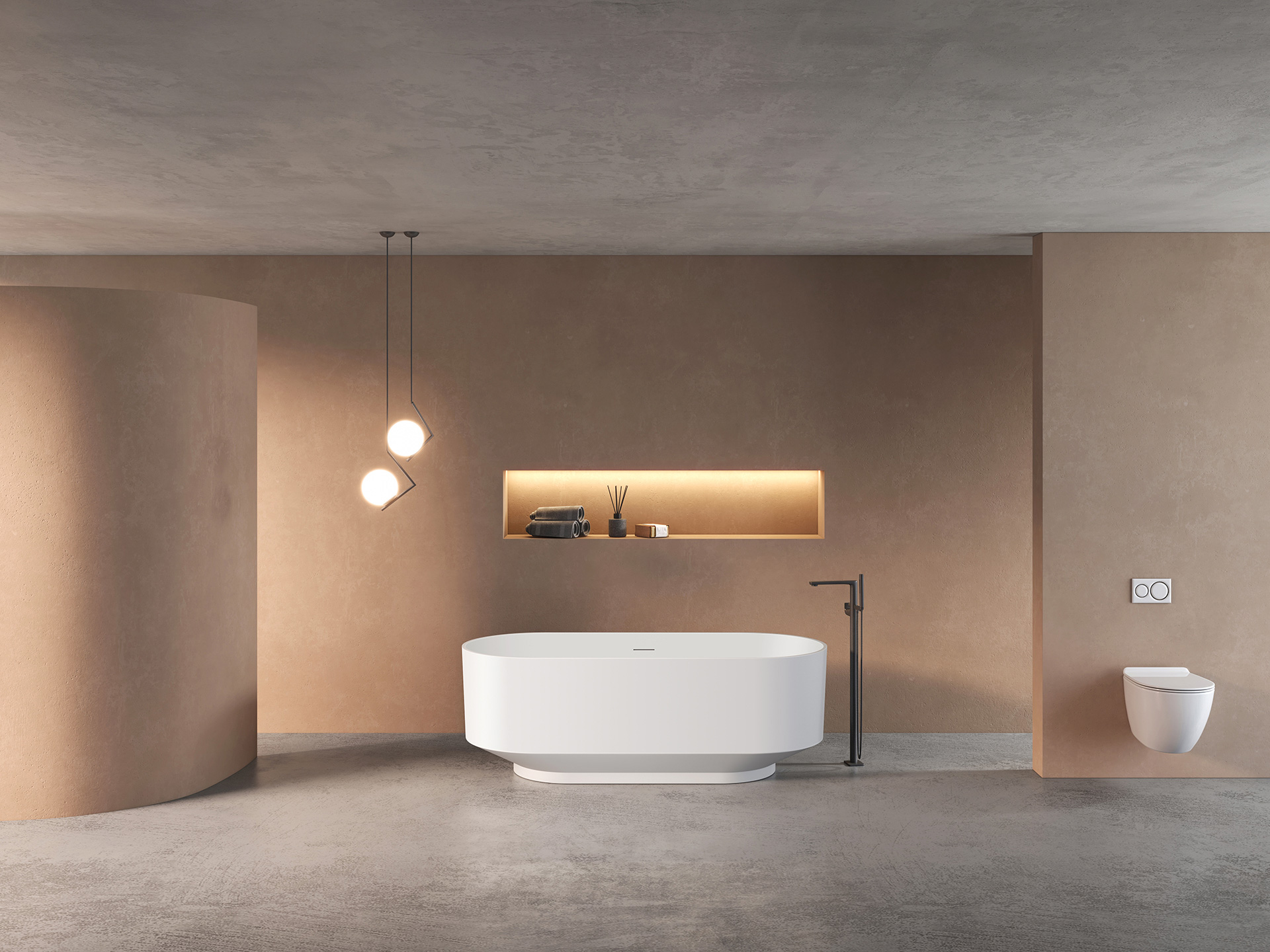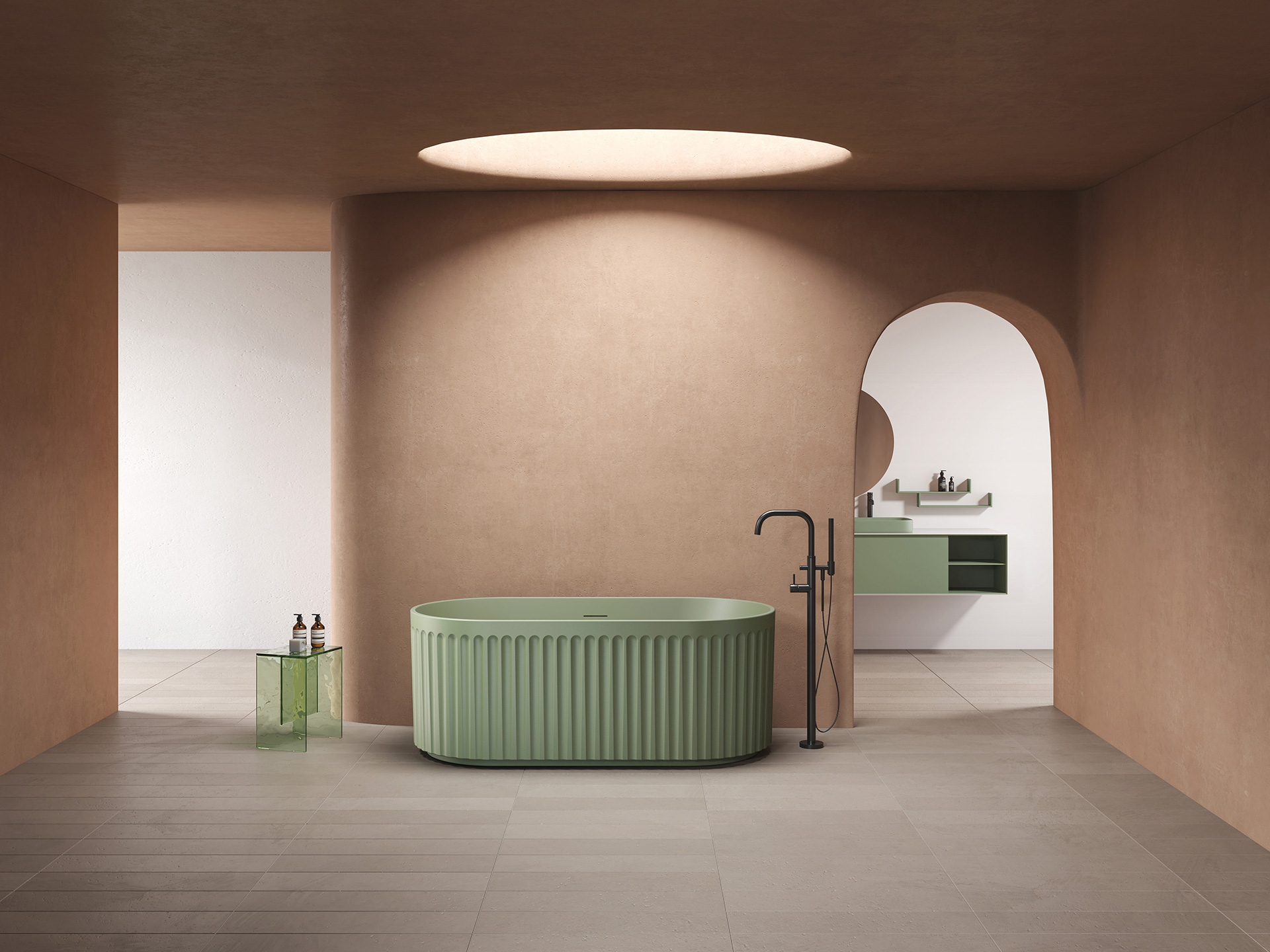Ceramic bathtubs are bathtubs made of ceramics. Ceramic bathtubs have a smooth surface and played an important role in the bathroom market in the past. However, with the continuous development and application of new materials in the production of bathroom products, the problems of bulkiness, material consumption, and fragility exposed by ceramic bathtubs are no longer suitable for the current demand for bathtubs and have been phased out, replaced by materials such as acrylic, cast iron enamel, and steel plate enamel. The ceramic bathtub is fired from ceramic clay, with a high glaze finish on the exterior, which can improve the overall quality of the bathroom. The material is thick and durable. But the ceramic bathtub is too heavy, difficult to transport, afraid of collision, easy to crack, with a smooth surface that has slipped and cannot be repaired after scratches.
In contrast, acrylic is a plastic polymer chemistry material with good transparency, chemical stability, weather resistance, easy dyeing, processing and beautiful appearance. The surface material of acrylic bathtubs is methyl methacrylate, covered with glass fiber on the back, and then reinforced with specialized resin. The overall color of the bathtub is uniform, with a smooth surface without layering, bubbles, etc. The thickness of the surface layer is generally more than 3mm, and it is firmly bonded with glass fiber without peeling. Acrylic materials are soft and easy to process, with rich shapes and colors, and high insulation effect. They can be insulated for a long time in winter, and are lightweight for transportation and installation. Surface scratches can be repaired, and the price is relatively cheap.
In contrast, acrylic bathtubs have many advantages, which have become the reason why people like acrylic bathtubs:
1. Acrylic bathtubs have a good insulation effect due to their slow heat transfer. Even in cold winters, when in the bathtub for a long time, the water temperature will not cool quickly.
2. Compared with cast iron bathtubs, steel plate bathtubs, and ceramic bathtubs, acrylic bathtubs have lower production costs, making them quite affordable and suitable for the general public to choose from.
3. If there are slight scratches on the surface of acrylic, don’t worry, the acrylic bathtub itself will have a certain degree of self-healing function.
4. The acrylic bathtub has a uniform color, smooth and white surface, and will not harm the human skin. Soaking in the acrylic bathtub for a long time can also make your skin more tender and elastic. In addition, due to the smooth surface of the bathtub, collisions between the human body and the bathtub generally do not cause much pain.
5. The acrylic bathtub will not experience layering or bubbles after prolonged use, and there will be no hollow sound when lightly tapped.
The ceramic bathtub is smooth and carries the risk of falling. The surface of a ceramic bathtub is very smooth, and when water enters the bathtub, it will increase the smoothness. Therefore, when using it, attention should be paid to anti slip to avoid accidents caused by falling. At the same time, ceramic bathtubs are bulky and inconvenient to transport. Ceramic bathtubs are fired from porcelain clay, so they have a certain weight, making them relatively bulky compared to other types of bathtubs. However, transportation by vehicles back and forth during decoration is extremely inconvenient.
Overall, ceramic bathtubs are made of fired ceramic clay, with a high glaze finish on the exterior, improving the overall level of the bathroom. The advantage is good viewing quality, thick material, and durability. The disadvantage is that it is bulky and difficult to transport, and is afraid of collision. It is relatively smooth and has slipped, and it cannot be repaired due to scratches and scratches. Popular trend: Acrylic bathtubs have slow heat transfer, therefore they have good insulation and no “cold” feeling when in contact with the body surface. Compared with ceramic bathtubs, they have a more “warm and soft” feeling. And ceramics are relatively cold, and acrylic has a higher cost-effectiveness, so most of the bathtubs used now are acrylic.
In summary, acrylic bathtubs will be more popular in the market compared to ceramic bathtubs.


